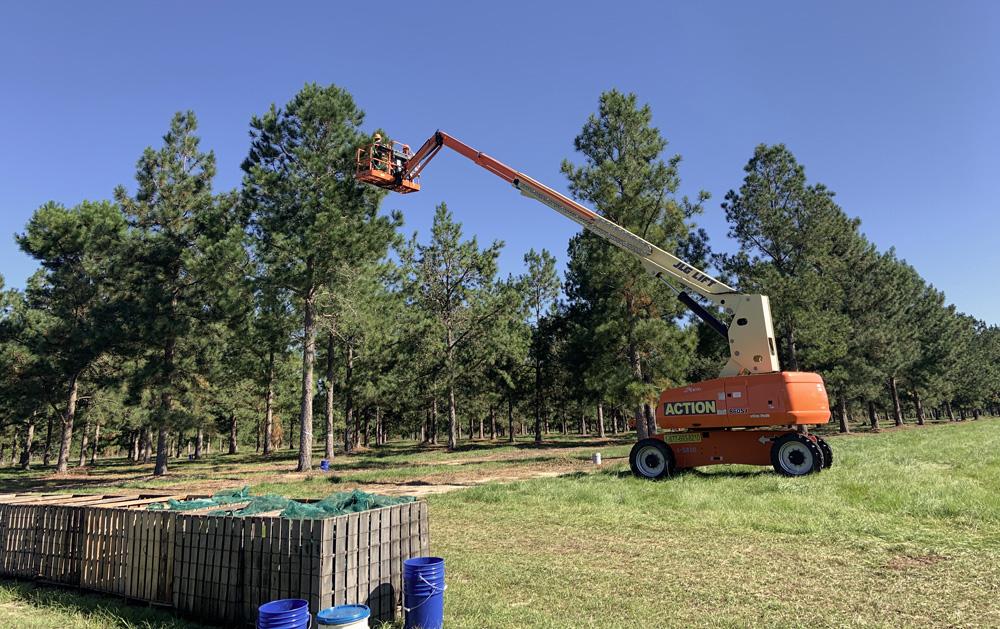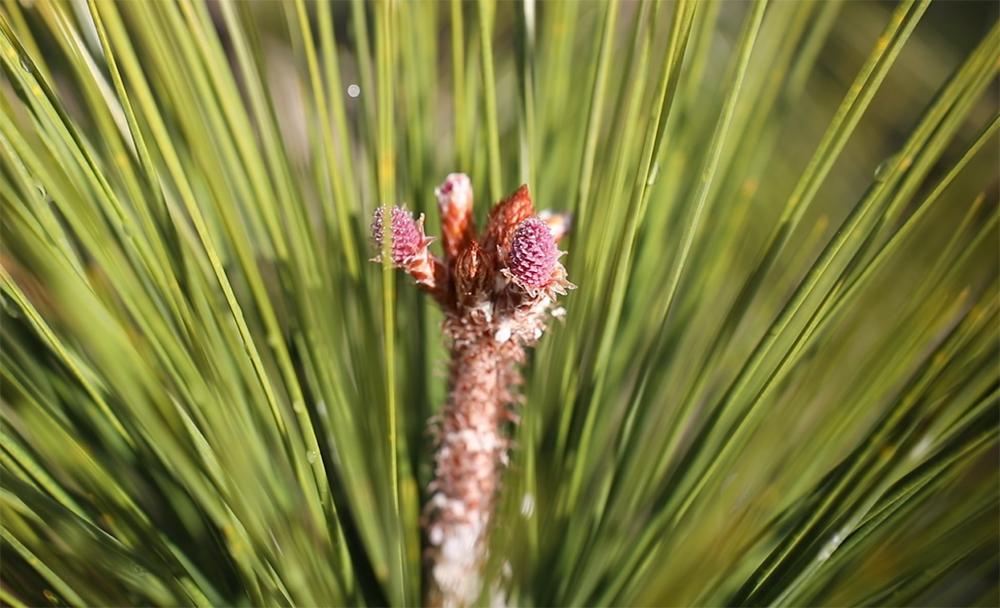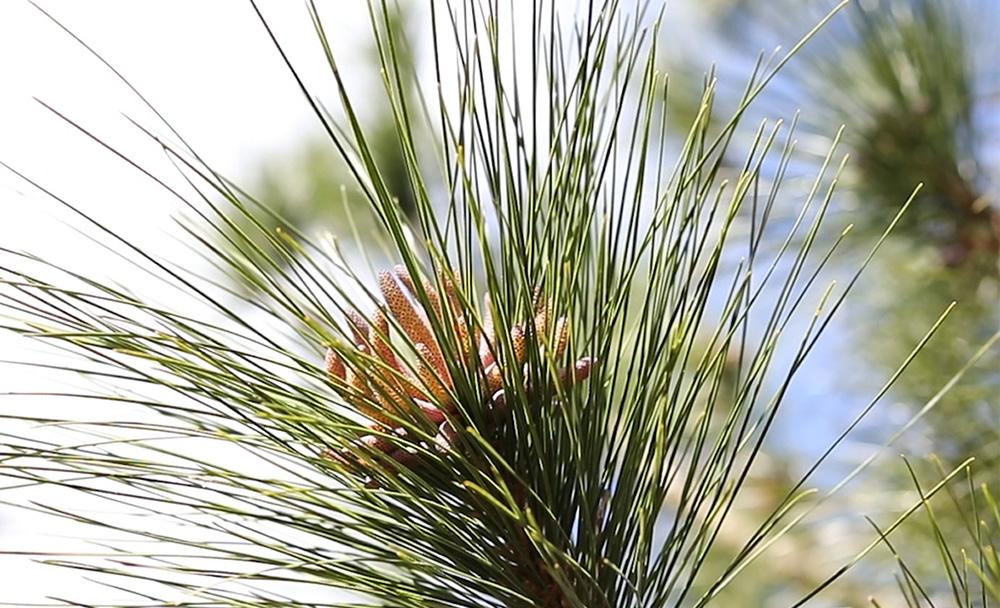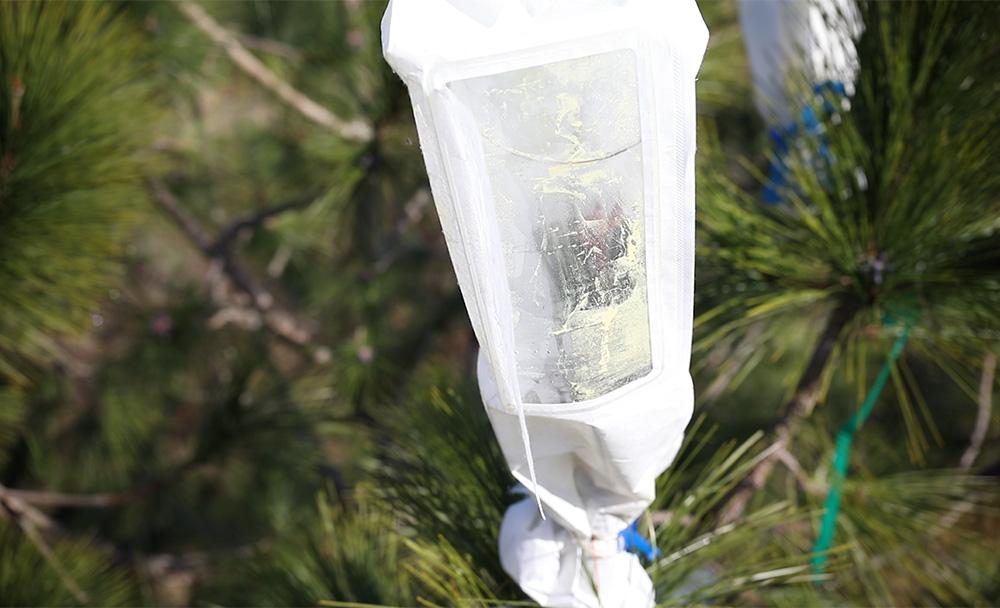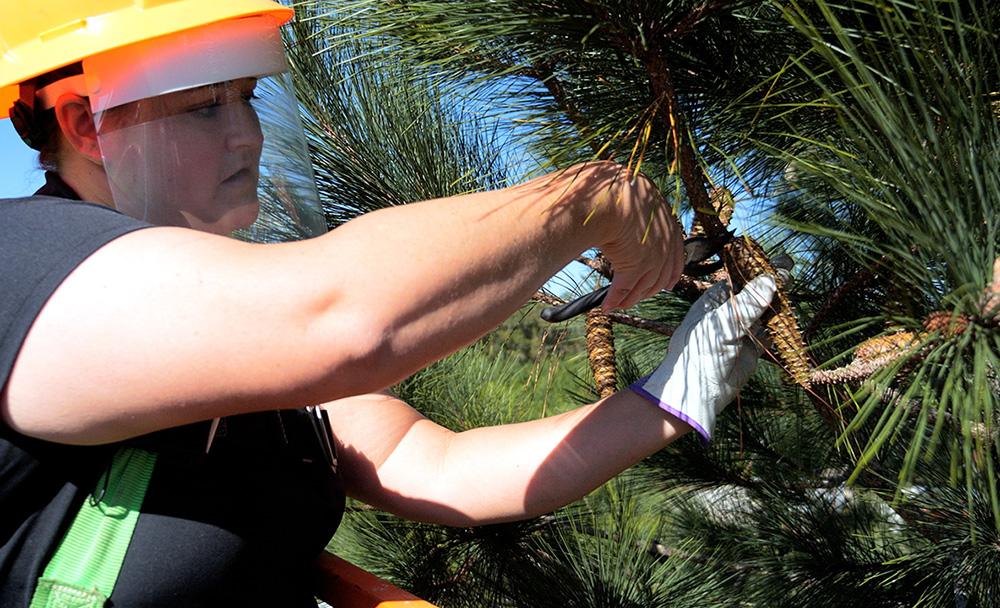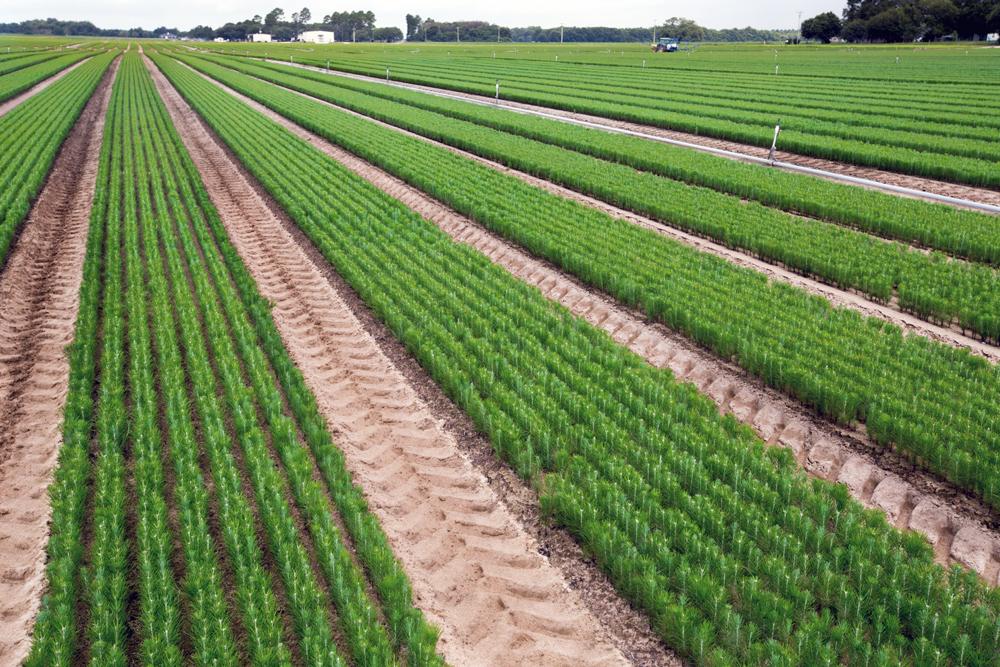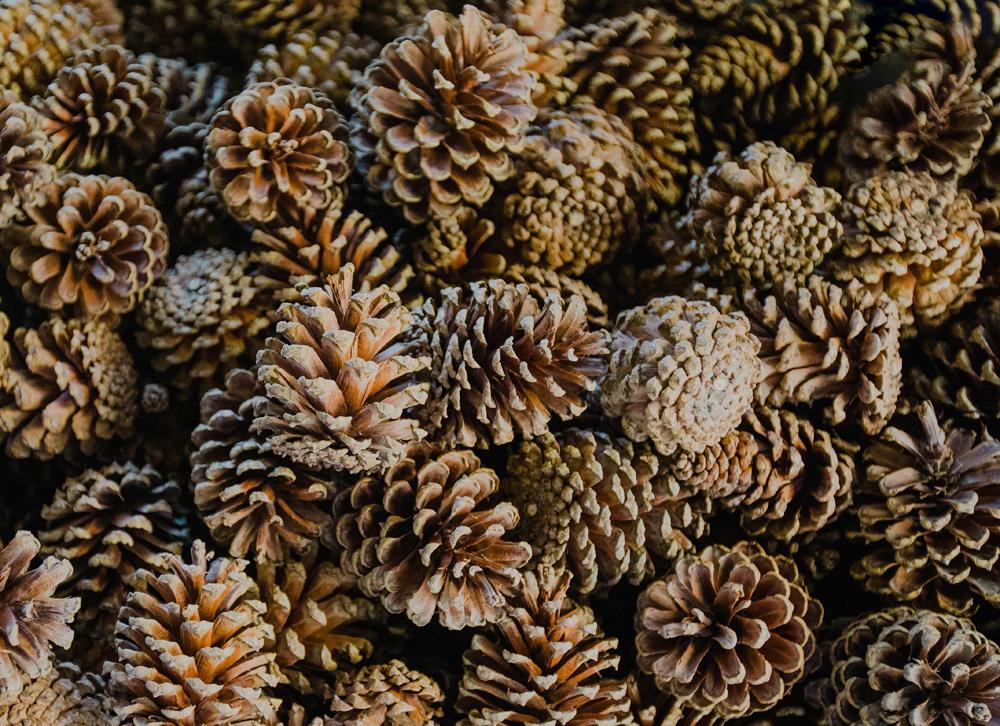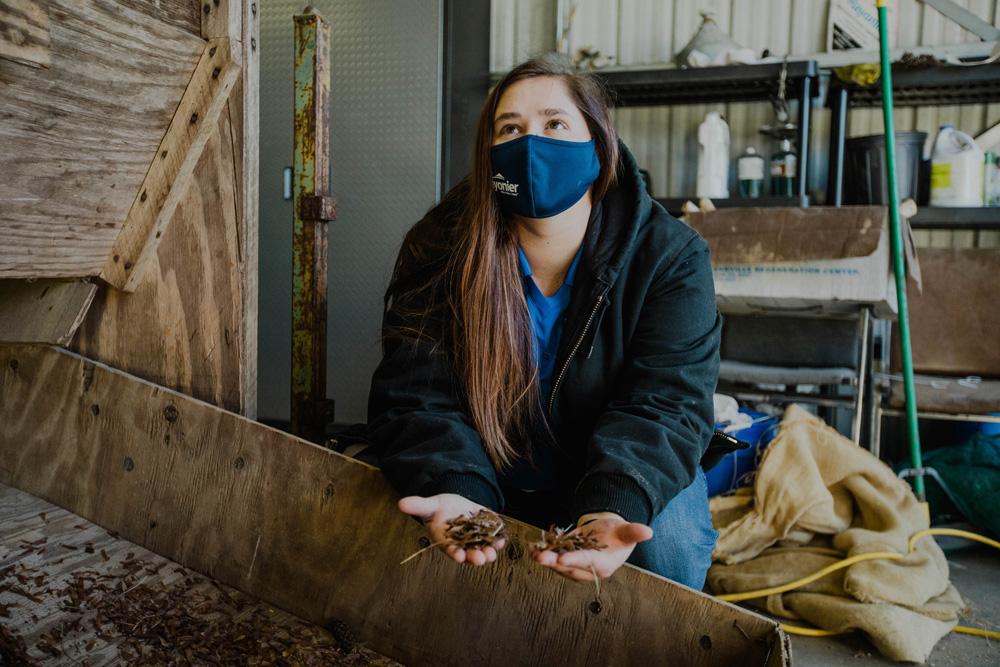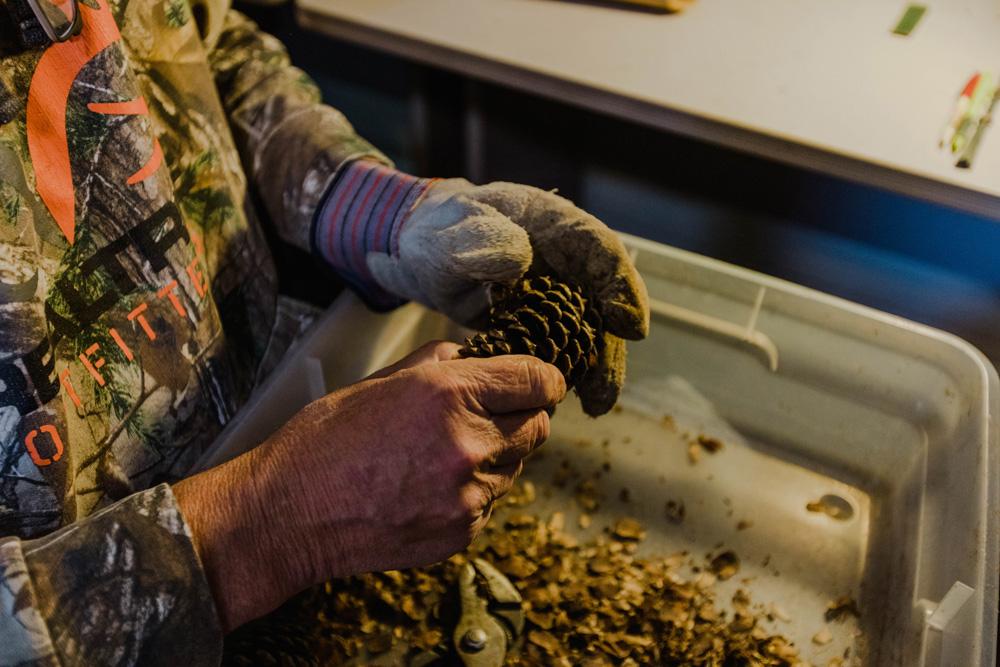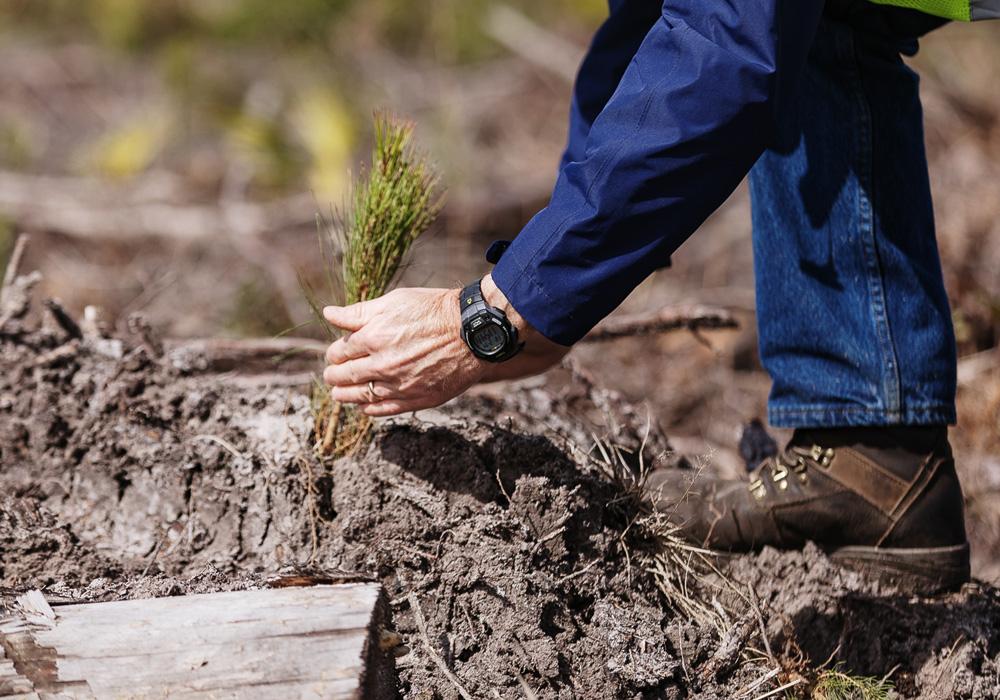How Pinecones From Rayonier's Best Trees Become Forests
You may pile them in buckets, kick them across the yard or decorate them for a craft, but did you ever think about the potential forest contained within every pinecone?
At Rayonier, we gather enough cones every fall to fill an 18-wheeler. But we don’t take just any pinecone: only the best of the best will do.
Take a look back at our work on a pine cone “crop," when our genetic research team did some matchmaking:
CONTROLLED POLLINATION ENSURES IDEAL PARENTS FOR FUTURE TREES
First, a lesson in pinecones: there are actually two kinds of cones on every tree, not one.
Most of us are familiar with the full-grown female pinecone, known as the “flower” or megastrobilus. Growing near the top of the tree, it starts as a small bud and takes 18 months to reach the mature size we find on the ground in our yards.
There are also male cones called catkins, which grow lower on the tree. These slim, cylindrical cones are loaded with pollen. Once their pollen is released into the atmosphere, the short-lived catkins have served their purpose and fall to the ground. Catkins grow lower than flowers so the wind will blow their pollen away from their tree, pollinating neighboring trees rather than self-pollinating the tree on which they grow. (The variety in genetics is better for the tree’s offspring).
Breeding our trees to be as disease resistant, straight and fast-growing as possible, our genetic research team goes to great lengths to control both parents of our seed cones. They cover the female cones in our genetically-bred seed orchards with bags just before they’re ripe for pollination. Then they shoot pollen from our best tree families into the bags. You can watch our video of the process for the same cones shown in this story and learn more about controlled pollination here.
“Our pine cones in no way have artificial genetic modifications,” explains Tree Improvement Forester Serenia O’Berry. “They’re bred the same way Mother Nature would do it, except we expedite the process.”
Once the flowers are pollinated, the bags are removed and the flowers are left to grow for 18 months. Once full grown, each cone contains enough seeds to grow a forest: an average pinecone contains about 150 seeds, and cones from specially-bred trees can produce even more.
PICKING PINECONES FOR SEED PRODUCTION
In the fall, our pinecones were full grown and ready to be picked. Our timing had to be perfect: we pick the cones while their scales are still closed tightly shut to ensure all seeds are still safely inside the cones. But they have to be mature enough that their “muscles” will be strong enough to open the scales after they’re picked. Years of forestry industry research has determined that cones are at exactly the right point when they have a specific gravity of .87.
How do we know when they’re ready? We float them in motor oil with a specific gravity of .88. If our cones float, we know they’re ready to pick. If they’re close to the surface, they’ll be ready in a few days. And if they sink to the bottom, they’ve got a while to go.
We use a hydraulic lift to reach the treetops and carefully remove the cones, one branch at a time. The cones are loaded into 18-bushel crates, which are taken by tractor trailer to a seed extractory that will oven-dry the cones and process them to remove the seeds and dewing them (dewinging makes them easier to plant).
These seeds, used to plant the next generation of trees in our forests across the U.S., will first travel to Elberta, Alabama, where they will be nurtured in the rich soils of our seedling nursery for the first 18 months of growth. Then the seedlings will be transplanted to our forests.
We also process some of the cones in a small tumbler at our Glennville Research Office in order to quality-test the number of seeds our cones are producing.
“These cones are usually post-ripened for about 6 weeks and then they’re put in a room with a dryer for 48 hours,” Serenia explains. “When the cones open up, that’s when we know they’re ready for seed extraction.”
We place bushels of cones in a tumbler, which spins them, allowing the seeds to fall out into a bin below. We then run the seeds through our own handmade vibrating, vacuum-powered seed blower that cleans and de-wings them.
We use a simple float test to determine which seeds are viable. Seeds that float in a bucket of water will not be able to germinate, but those that sink will.
Then we count the seeds using a machine called a seed counter.
OUR GENETIC RESEARCH CONES GET SPECIAL TREATMENT
Even as we mass-produce seeds from our best tried-and-true tree families, we’re constantly looking for ways to make our trees even healthier, straighter and faster-growing.
“We focus on the most advanced genetics because it contributes to the sustainability of our company, our industry, and the environment,” Serenia explains. The difference is striking when her team compares photographs of Rayonier forests from the mid-1900s to today’s forests. Our pine trees are much healthier, more robust and faster-growing than their ancestors.
To continue improving, we use special research forests in which we graft genetic research trees with high potential, then gather their cones and test the performance of their progeny. There are only a handful of cones for each family, so every seed plays an extremely important role. That’s why we process those cones completely by hand.
The research cones are collected and placed in bags labeled by family. Then we take each cone apart by hand with pliers, ensuring we find every single seed. Once cleaned and counted, the seeds will be packaged by family and placed in our freezer until we’re ready to plant and test further.
“Processing cones is exciting because it’s a whole year-and-a-half worth of labor coming to fruition,” Serenia says. “It’s the next step in making sure we have the best possible seedlings for our forests.”
PLANTING TREES BY THE MILLIONS
Just how many seeds do we produce every season? Enough to keep our seedling nursery busy: we grow and plant more than 30 million trees every year.
It all starts with the pollination of those baby pinecone flowers. Decades later, the trees that grow from the seeds in those pinecones will be the raw material needed to produce whatever wood, pulp and paper products the next generation requires.

